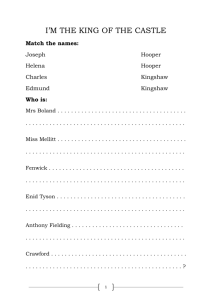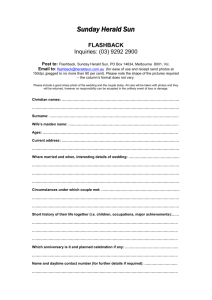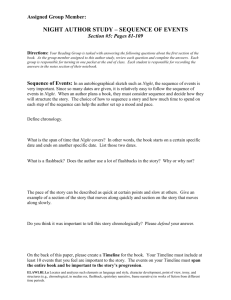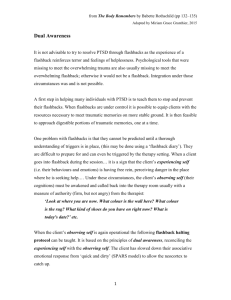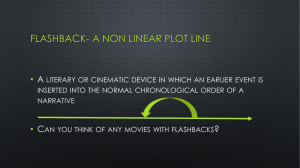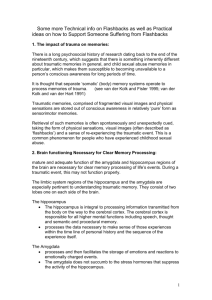Kingcastle6
advertisement
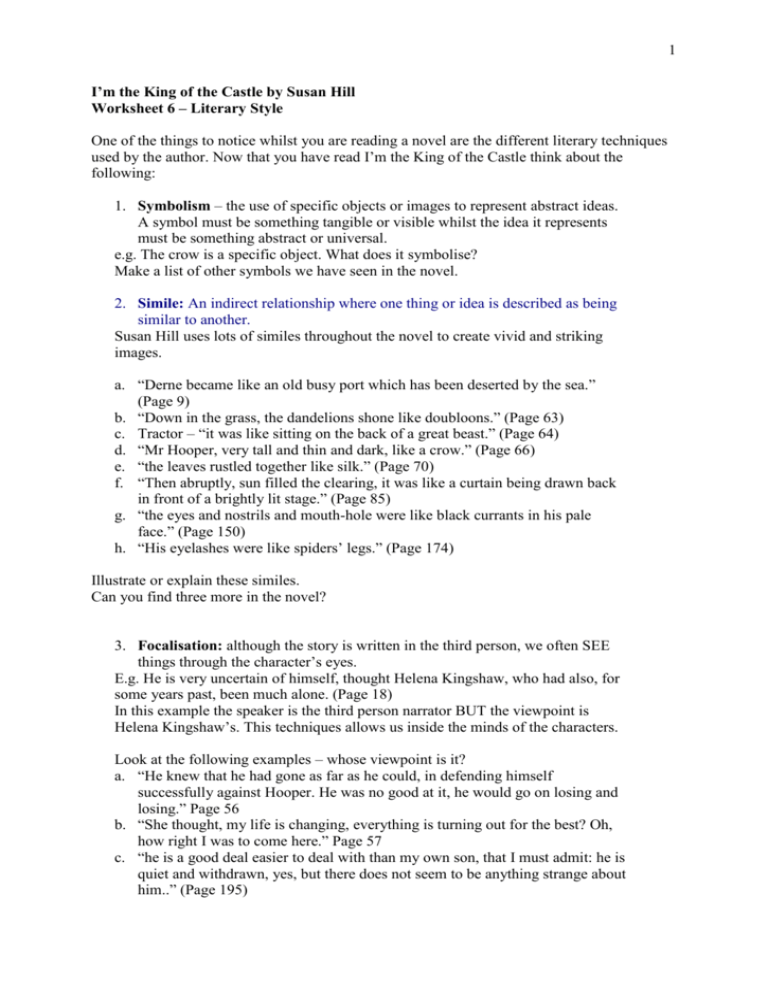
1 I’m the King of the Castle by Susan Hill Worksheet 6 – Literary Style One of the things to notice whilst you are reading a novel are the different literary techniques used by the author. Now that you have read I’m the King of the Castle think about the following: 1. Symbolism – the use of specific objects or images to represent abstract ideas. A symbol must be something tangible or visible whilst the idea it represents must be something abstract or universal. e.g. The crow is a specific object. What does it symbolise? Make a list of other symbols we have seen in the novel. 2. Simile: An indirect relationship where one thing or idea is described as being similar to another. Susan Hill uses lots of similes throughout the novel to create vivid and striking images. a. “Derne became like an old busy port which has been deserted by the sea.” (Page 9) b. “Down in the grass, the dandelions shone like doubloons.” (Page 63) c. Tractor – “it was like sitting on the back of a great beast.” (Page 64) d. “Mr Hooper, very tall and thin and dark, like a crow.” (Page 66) e. “the leaves rustled together like silk.” (Page 70) f. “Then abruptly, sun filled the clearing, it was like a curtain being drawn back in front of a brightly lit stage.” (Page 85) g. “the eyes and nostrils and mouth-hole were like black currants in his pale face.” (Page 150) h. “His eyelashes were like spiders’ legs.” (Page 174) Illustrate or explain these similes. Can you find three more in the novel? 3. Focalisation: although the story is written in the third person, we often SEE things through the character’s eyes. E.g. He is very uncertain of himself, thought Helena Kingshaw, who had also, for some years past, been much alone. (Page 18) In this example the speaker is the third person narrator BUT the viewpoint is Helena Kingshaw’s. This techniques allows us inside the minds of the characters. Look at the following examples – whose viewpoint is it? a. “He knew that he had gone as far as he could, in defending himself successfully against Hooper. He was no good at it, he would go on losing and losing.” Page 56 b. “She thought, my life is changing, everything is turning out for the best? Oh, how right I was to come here.” Page 57 c. “he is a good deal easier to deal with than my own son, that I must admit: he is quiet and withdrawn, yes, but there does not seem to be anything strange about him..” (Page 195) 2 d. “It was because of me, I did that, it was because of me…” (Page 222-3) Whose viewpoint is the story mainly told through? Why is that? Whose viewpoint is rarely expressed – except at the end of the novel? Think about why Susan Hill does this? 4. Flashback Page 34 – Swimming pool flashback. Page 67 – Wart flashback. Page 156 – Lesage flashback. Page 168 – Fenwick flashback. Page 188 – Crawford flashback Why do you think Susan Hill includes these flashbacks? What do we learn about Kingshaw from them? Why does she not have any flashbacks about Hooper’s life? 5. Weather Pathetic Fallacy: the attribution of human emotions or characteristics to inanimate objects or to nature; for example, angry clouds; a cruel wind. In the novel, we could argue that the weather reflects the human emotions taking place at that time. Look at the examples below and explain how the weather reflects the feelings of the characters at that moment. Page 41: “The rain was driving across the lawn now into the yew trees, battering against the window. It was gone nine o’ clock, and already dusk, because of the heavy clouds.” Page 30: in the cornfield – “the sun came glaring down … his face was burning.” Chapter 7 – the thunder and storm in Hang Wood Chapter 11 – after being locked in the shed it begins to rain: “Outside, great, flat spots of rain began to fall heavily, one by one, like sweat from the sky, as Kingshaw walked back, very slowly, across the allotment.” (Page 146)
